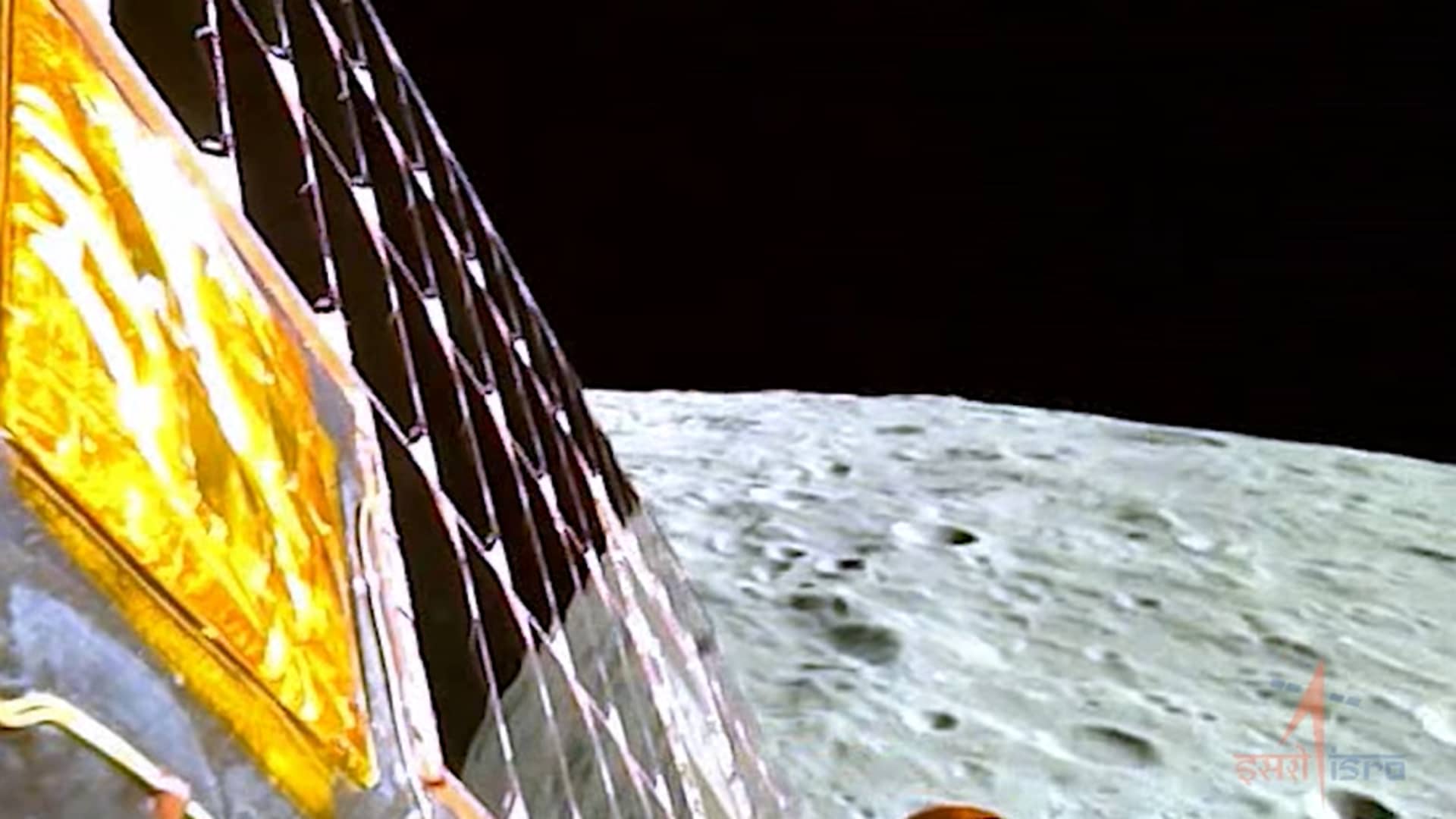
India staked new claim as a national superpower in space on Wednesday, landing its Chandrayaan-3 mission safely on the moon’s unexplored south pole.
The Chandrayaan-3 spacecraft launched last month and touched down on the lunar surface around 8:34 a.m. ET.
The feat makes India the fourth country to land on the moon, and the first to land on one of the moon’s lunar poles. Previously, Russia (then the Soviet Union), the U.S. and China landed spacecraft successfully on the moon.
Indian Prime Minister Narendra Modi tuned in to the livestream of the landing from Johannesburg, where he is attending the 15th annual BRICS summit of emerging markets.
“All the people of the world, the people of every country and region: India’s successful moon mission is not just India’s alone … this success belongs to all of humanity,” Modi said, speaking on the Indian Space Research Organization webcast of the event.
“We can all aspire for the moon, and beyond,” Modi added.
The lunar south pole has emerged as a place of exploration interest thanks to recent discoveries of traces of water ice on the moon. India previously attempted a lunar south pole landing in September 2019, but a software failure caused the Chandrayaan-2 mission to crash into the surface.
“[The south pole is] really a very interesting, historical, scientific and geologic area that a lot of countries are trying to get at that can serve as a base for future exploration,” Wendy Whitman Cobb, professor of strategy and security studies at the U.S. Air Force School of Advanced Air and Space Studies, told CNBC.
Whitman Cobb added that the discovery of water on the south pole of the moon is “really important for future exploration,” as it could serve as a source of fuel for rockets and spacecraft.
Days before Chandrayaan-3’s landing, Russia attempted to land its first spacecraft on the moon in almost 50 years. But the Luna-25 mission smashed into the lunar surface on Saturday, with Russian space agency Roscosmos confirming the spacecraft spun of control.
Earlier this year, the first attempted landing by Japanese company Ispace also crashed in the final moments.
In the U.S., NASA has largely turned to companies for this type of robotic exploration mission, with the agency instead focusing most if its own effort on the lunar human spaceflight program, Artemis.
Houston-based Intuitive Machines aims to launch its first cargo mission to the moon in November, while Pittsburgh-based Astrobotic is preparing to launch its first lunar cargo mission within the next year.
A rising space power
Modi visited the U.S. in June, during which he signed agreements alongside President Joe Biden to join the Artemis Accords and further collaborate on missions between ISRO and NASA.
Next year, the space agencies are expected to work together to fly Indian astronauts to the International Space Station.
India has also done more with less than its top global counterparts, with ISRO’s annual budget a fraction of NASA’s. In 2020, ISRO estimated the Chandrayaan-3 mission would cost about $75 million.
The mission was originally slated for 2021, but was delayed by the Covid pandemic.
NASA Administrator Bill Nelson congratulated ISRO on the successful landing in a post on X, the site formerly known as Twitter, adding, “We’re glad to be your partner on this mission!”
By CNBC

